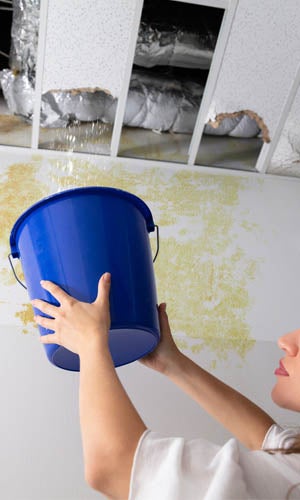The publisher is making several good pointers on the subject of Locating water leaks as a whole in this post down below.

Early detection of leaking water lines can mitigate a possible disaster. Aside from saving you money, it will reduce the irritation and also aggravation. The moment you locate a leak, calling your plumber for fixings is the most effective option. Some small water leaks may not be noticeable. If you can not identify it with your naked eyes, below are some hacks that help.
1. Examine the Water Meter
Inspecting it is a guaranteed method that assists you uncover leaks. If it moves, that indicates a fast-moving leak. This implies you may have a slow leak that can also be underground.
2. Inspect Water Intake
If you find abrupt changes, in spite of your consumption being the same, it implies that you have leakages in your plumbing system. An abrupt spike in your expense shows a fast-moving leak.
On the other hand, a constant increase each month, despite having the very same routines, reveals you have a sluggish leakage that's likewise gradually intensifying. Call a plumber to completely check your building, particularly if you really feel a warm location on your floor with piping below.
3. Do a Food Coloring Test
When it comes to water usage, 30% comes from toilets. If the color somehow infiltrates your bowl throughout that time without flushing, there's a leak in between the tank and dish.
4. Asses Exterior Lines
Do not neglect to examine your outside water lines also. Ought to water seep out of the connection, you have a loosened rubber gasket. One tiny leakage can waste bunches of water and also increase your water expense.
5. Examine as well as Assess the Scenario
House owners ought to make it a routine to examine under the sink counters as well as also inside closets for any type of bad odor or mold and mildew development. These 2 red flags show a leakage so punctual interest is called for. Doing regular evaluations, also bi-annually, can conserve you from a major problem.
Inspect for stainings and also deteriorating as a lot of pipelines and home appliances have a life span. If you think leaking water lines in your plumbing system, don't wait for it to escalate.
Early discovery of dripping water lines can alleviate a prospective catastrophe. Some small water leakages might not be noticeable. Inspecting it is a proven method that helps you uncover leaks. One little leakage can waste lots of water as well as surge your water costs.
If you suspect leaking water lines in your plumbing system, do not wait for it to intensify.
WARNING SIGNS OF WATER LEAKAGE BEHIND THE WALL
PERSISTENT MUSTY ODORS
As water slowly drips from a leaky pipe inside the wall, flooring and sheetrock stay damp and develop an odor similar to wet cardboard. It generates a musty smell that can help you find hidden leaks.
MOLD IN UNUSUAL AREAS
Mold usually grows in wet areas like kitchens, baths and laundry rooms. If you spot the stuff on walls or baseboards in other rooms of the house, it’s a good indicator of undetected water leaks.
STAINS THAT GROW
When mold thrives around a leaky pipe, it sometimes takes hold on the inside surface of the affected wall. A growing stain on otherwise clean sheetrock is often your sign of a hidden plumbing problem.
PEELING OR BUBBLING WALLPAPER / PAINT
This clue is easy to miss in rooms that don’t get much use. When you see wallpaper separating along seams or paint bubbling or flaking off the wall, blame sheetrock that stays wet because of an undetected leak.
BUCKLED CEILINGS AND STAINED FLOORS
If ceilings or floors in bathrooms, kitchens or laundry areas develop structural problems, don’t rule out constant damp inside the walls. Wet sheetrock can affect adjacent framing, flooring and ceilings.
https://www.servicemasterbyzaba.com/blog/how-to-detect-water-leakage-in-walls/

Hopefully you enjoyed reading our part about Leaking water lines. Thanks so much for taking a few minutes to read our post. Those who enjoyed reading our blog posting if you please do not forget to pass it around. We treasure reading our article about Locating water leaks.